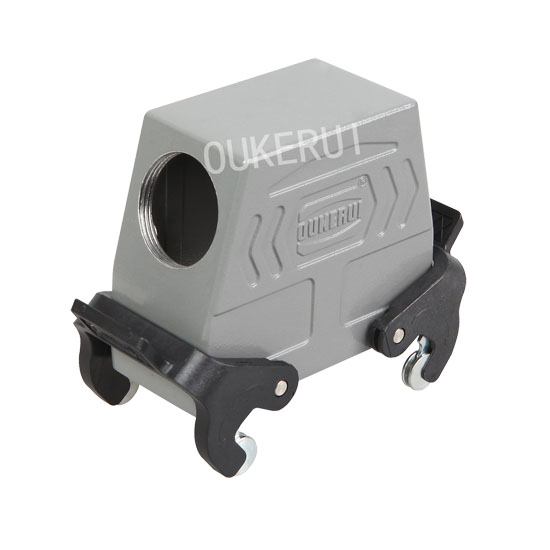Characteristics of Heavy Duty Connector Hoods
2023-10-17
Heavy-duty connector hoods are essential components used in industrial and commercial applications to provide protection and secure connections for electrical connectors. These hoods come in various designs and configurations, each tailored to specific requirements. Here are some common characteristics of heavy-duty connector hoods:
1. Robust Construction: Heavy-duty connector hoods are typically made of durable materials such as metal, high-quality plastics, or die-cast aluminum. This construction ensures that they can withstand harsh environmental conditions, including dust, moisture, vibrations, and temperature fluctuations.
2. Protection Rating: Connector hoods often have an IP (Ingress Protection) rating that indicates their level of protection against the intrusion of solid particles and liquids. Common IP ratings for heavy-duty connector hoods include IP65, IP67, and IP68, indicating resistance to dust, water, and immersion.
3. Locking Mechanism: Many heavy-duty connector hoods are equipped with a reliable locking mechanism to securely hold the connectors in place. The locking system ensures that the connections remain stable even in high-vibration environments, preventing accidental disconnections.
4. Cable Entry: Connector hoods have multiple cable entry options, such as top entry, side entry, or bottom entry. The choice of entry style depends on the specific application and the desired cable routing.
5. Modular Design: Some heavy-duty connector hoods have a modular design, allowing users to customize the configuration based on their requirements. Modular hoods can accommodate various combinations of signal, power, and control connectors in a single housing.
6. Mounting Options: Heavy-duty connector hoods can be mounted in different ways, such as surface mounting, panel mounting, or bracket mounting. The mounting method should be chosen to suit the installation environment and ensure a secure attachment.
7. Integrated Gasket: Many hoods feature an integrated gasket or sealing system to provide an additional layer of protection against dust and moisture ingress. The gasket ensures a tight seal between the hood and the mating connector, enhancing the overall IP rating.
8. Size and Form Factor: Heavy-duty connector hoods are available in various sizes and form factors to accommodate different connector types and wiring configurations. Some hoods may have multiple cable entries to support a variety of wire diameters.
9. Brand Compatibility: Connector hoods are designed to work with specific connector series or brands. It is essential to select a hood that is compatible with the connectors being used to ensure proper mating and functionality.
10. Color Coding: In some cases, heavy-duty connector hoods may feature color-coding or labeling options to simplify identification and wiring during installation and maintenance.
When choosing heavy-duty connector hoods, consider the specific environmental conditions, the connector type being used, and the desired protection level to ensure the hoods meet the required standards and provide reliable and secure connections.



